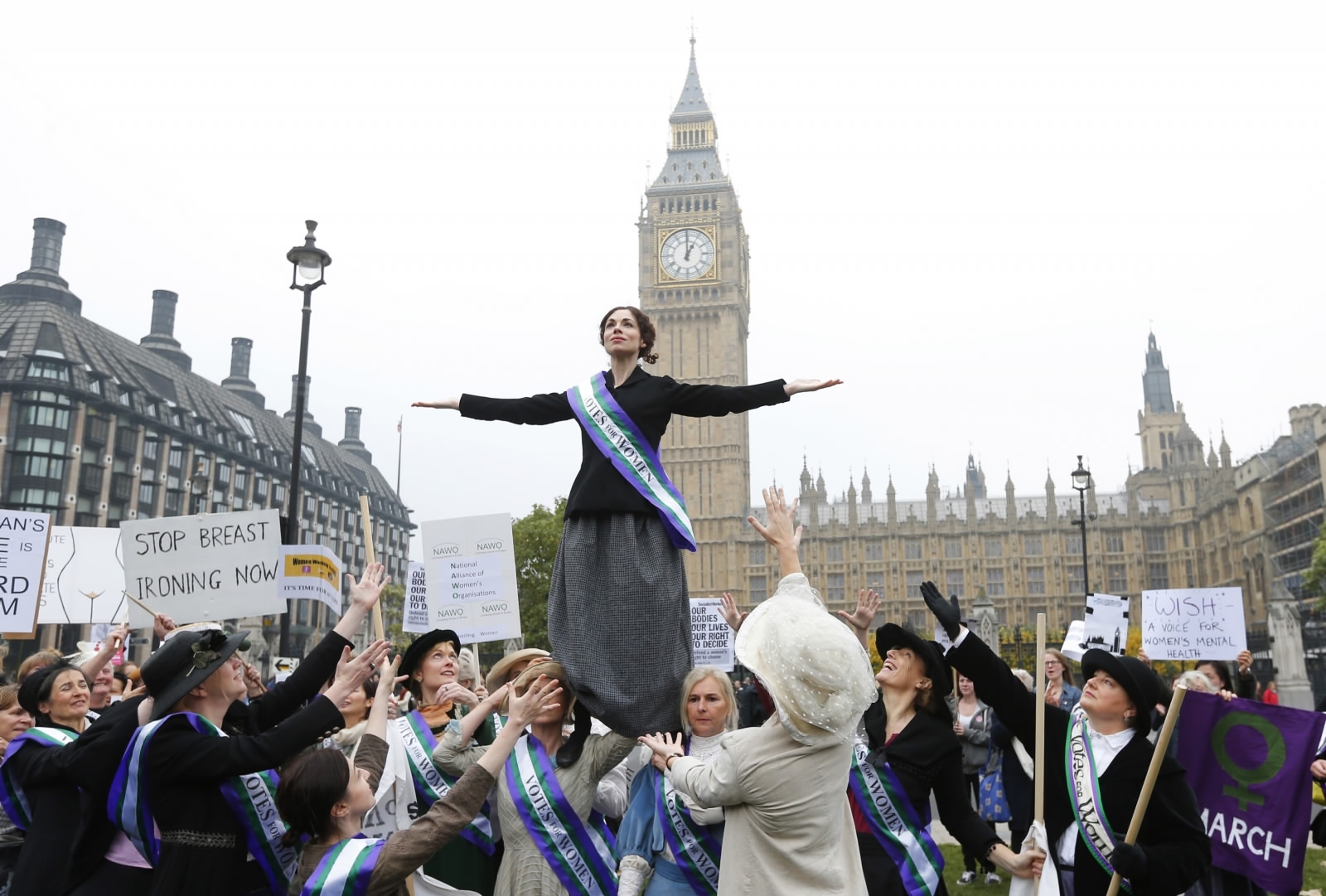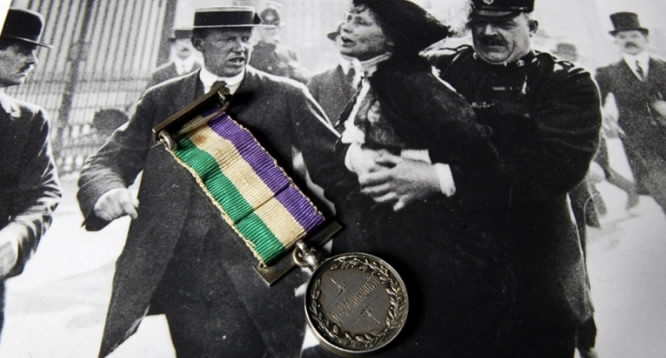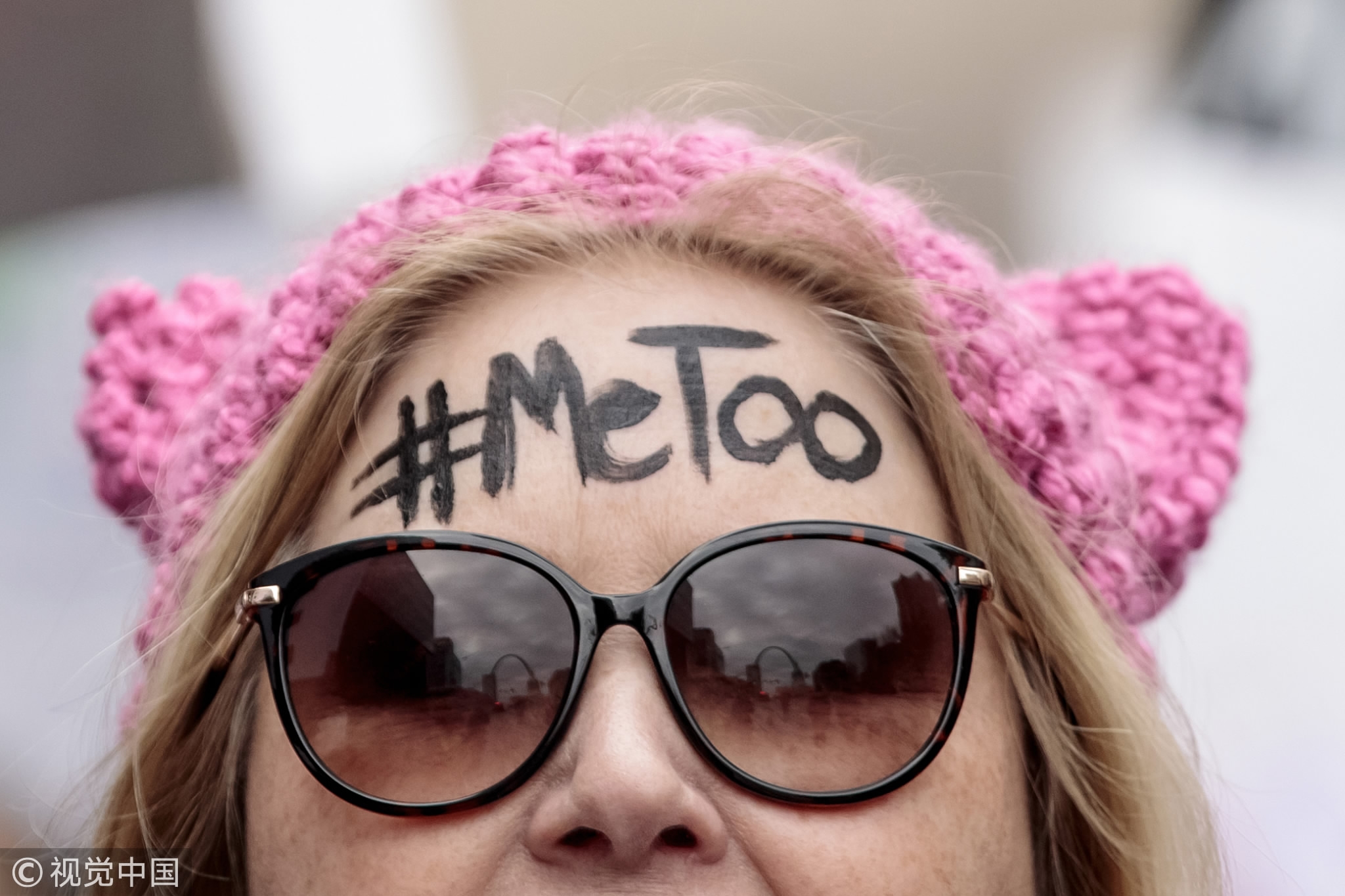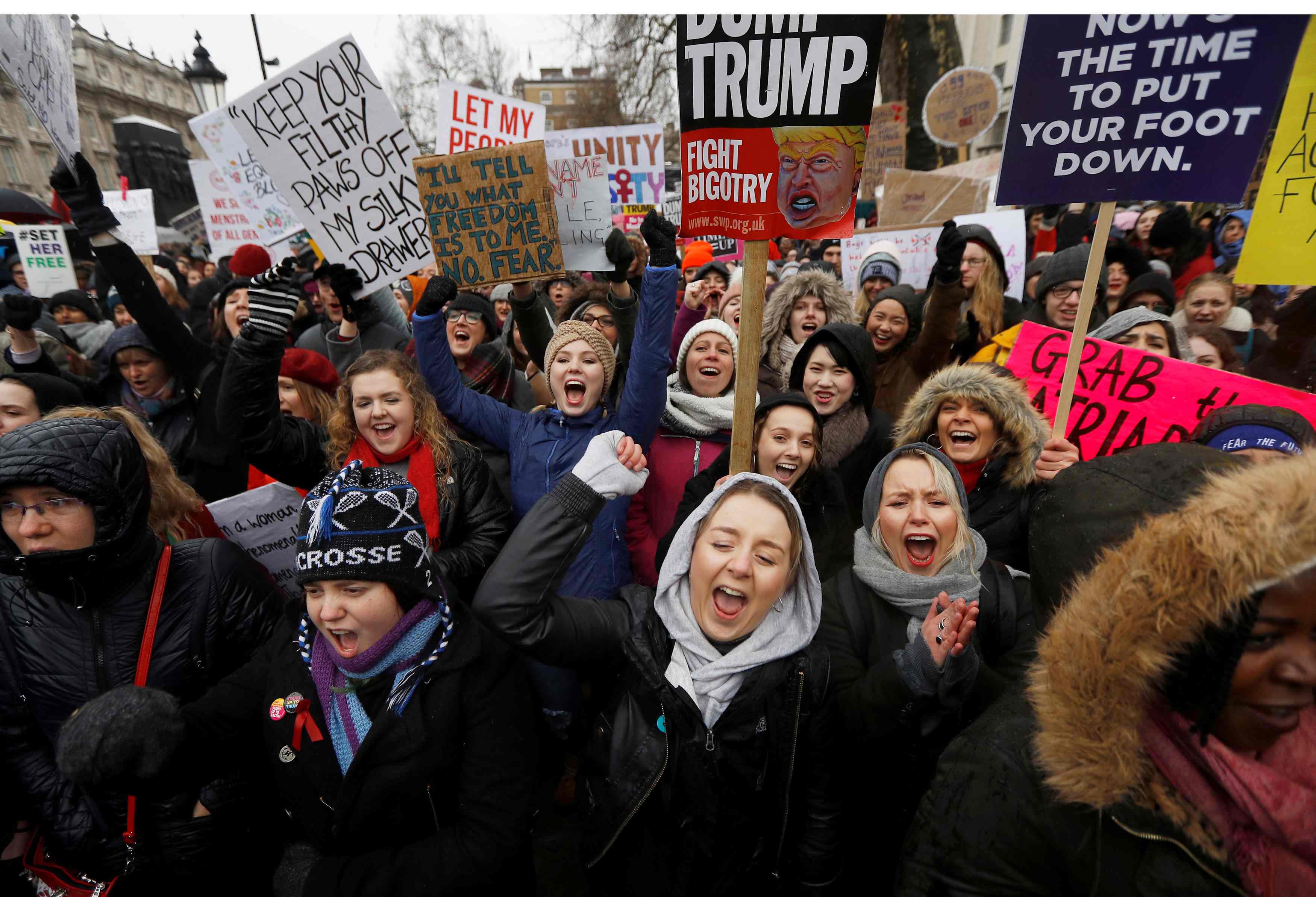Tuesday marks 100 years since women in Britain were given the right to vote in parliamentary elections for the first time.
British women aged over 30 and "of property" gained the right to vote in 1918 under the Representation of the People Act. One hundred years later, the country has embraced two female leaders, Margaret Thatcher, the first female British prime minister, and Theresa May, who is currently leading the UK in a post-Brexit era.
A number of major events are planned to mark the centenary and remember the achievements of the suffrage movement. A 50-pence commemorative coin will be launched, and a statue of the suffragist leader Millicent Fawcett will be unveiled in Parliament Square in April.
The Royal Mint commemorative 50-pence will enter general circulation later this year. Speaking at the coin's striking, the great-granddaughter of suffragette Emmeline Pankhurst, who founded the Women’s Social and Political Union in 1903, told the BBC, “I think she would have been happy that the coin is here to mark the struggle. Suffragettes actually used to deface coins and mark them with 'Votes for Women' so there is an element of justice in having an official coin.”

A 50-pence commemorative coin marks the 100th Anniversary of the 1918 Representation of the People Act. /The Royal Mint
A 50-pence commemorative coin marks the 100th Anniversary of the 1918 Representation of the People Act. /The Royal Mint
The first British woman votes
Under the 1918 Representation of the People Act, all men over 21 and 8.5 million women over 30 who owned property or were graduates voting in a university constituency were granted the vote for the first time in Britain, according to The Guardian.
In the same year, the Parliament (Qualification of Women) Act gave women over 21 – the same age as for men – the right to stand for election as an MP.
Hence, the general election in December 1918 witnessed not only the first female votes, but also the first woman MP, Constance Markievicz. She was elected as an Irish republican, however, and chose not to join the House of Commons.

Performers dressed in period costume re-enact a march on Parliament by the suffragettes during a rally by feminist organizations to demand equality for women in central London, October 24, 2012. /Reuters Photo
Performers dressed in period costume re-enact a march on Parliament by the suffragettes during a rally by feminist organizations to demand equality for women in central London, October 24, 2012. /Reuters Photo
Ten years later, the 1928 Representation of the People (Equal Franchise) Act widened suffrage by giving women electoral equality with men, regardless of property ownership, marking full legal equality.
British women paved the way in the early 20th century not through peaceful talks, but via violence and obstruction. Suffragettes utilized bombs and hunger strikes to achieve what Britons have today. They broke shop windows, cut electricity lines, disrupted meetings and even bombed the house of a government minister.
One of the most enduring and powerful images of the suffragette movement was created by Pankhurst, who threw herself under the king’s horse and died of her injuries in 1913, aged just 40.

Emmeline Pankhurst's imprisonment Medal is seen on a photograph in central London on March 4, 2004. /Reuters Photo
Emmeline Pankhurst's imprisonment Medal is seen on a photograph in central London on March 4, 2004. /Reuters Photo
Women and power today
One hundred years on, more and more women are ascending to high political office around the world, making decisions that could affect the course of history.
The Guardian asked 100 women what the vote means to them earlier this year. Prime minister Theresa May urged everybody eligible to vote. “It is their chance to have their say in who is running their country," May said. "There are women who gave up their lives to have the right to vote in this country and people who yearn, across the world, to have this freedom and so we should use it.”

British prime minister Theresa May walks out of 10 Downing Street on January 30, 2018. /Reuters Photo
British prime minister Theresa May walks out of 10 Downing Street on January 30, 2018. /Reuters Photo
Diane Abbott, British shadow home secretary, also noted the progress of women’s power, saying, “Parliament today is so different compared to 30 years ago. In 1987, women used to stand up to speak and men would shout you down. They can’t do that now.”
There is still a distance to travel before numerical equality reaches Britain’s House of Commons, however. Women make up more than half of the population in the UK, but only 208 of 650 seats elected in the 2017 election were taken by females. And a new political voice – the Women's Equality Party – was founded in 2015, indicating the struggle is far from over.
Last year, gender inequality and sexual harassment from Hollywood to the Houses of Parliament shocked the world. The #metoo effect aroused global resonance on the issue of women’s rights and power. Hard fights such as maternity leave rights, equal pay and domestic violence legislation are worldwide issues which should require more attention. There is still a long way to go.

A participant in the Women's March for Truth on January 20, 2018 in St Louis, Missouri, United States. /VCG Photo
A participant in the Women's March for Truth on January 20, 2018 in St Louis, Missouri, United States. /VCG Photo
Women's suffrage around the world
Britain was far from the first country to enfranchise women.
New Zealand granted the first global vote to its female citizens in 1893, followed by Australia in 1902, Finland in 1906 and Denmark in 1915.
Women in four countries – Austria, Germany, Poland and Russia –received voting rights in 1918. The United States granted women the right to vote in 1920, while France did so in 1944. Women in Saudi Arabia became eligible to vote in 2015.
Universal franchise came to China in 1953 when The Electoral Law of the People's Republic of China (PRC) stipulated that women have the same right to vote as men. During the first large-scale election in December 1953, more than 90 percent of eligible women in China voted and 17 percent of the total local deputies to National People’s Congress were women.
According to Article 48 of the Constitution of the PRC, “Women in the People’s Republic of China enjoy equal rights with men in all spheres of life, in political, economic, cultural, social and family life. The state protects the rights and interests of women, applies the principle of equal pay for equal work to men and women alike and trains and selects cadres from among women.”
At last year’s 19th National Congress of the Communist Party of China (CPC), 24.1 percent of the delegates were female, an increase of 30 people on the 18th CPC National Congress, according to China Women’s News.
Although male Chinese leaders are more familiar to the world, there are influential women in the Chinese political system, such as Liu Yandong (a member of the politburo of the CPC Central Committee and also the vice premier of the State Council), and Sun Chunlan (a member of Political Bureau of the CPC Central Committee).

Demonstrators shout at a Times Up protest supporting women's rights in London, Britain, January 21, 2018. /Reuters Photo
Demonstrators shout at a Times Up protest supporting women's rights in London, Britain, January 21, 2018. /Reuters Photo








